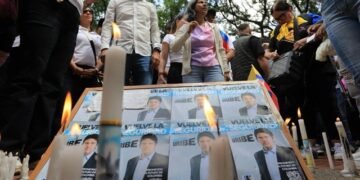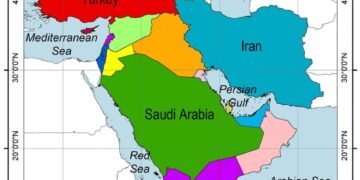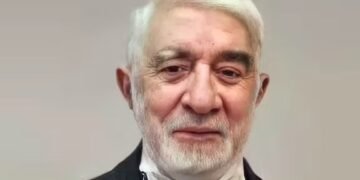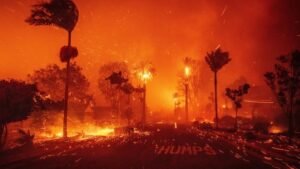At Least 2 Dead, Thousands Flee as Wildfires Rage Across Los Angeles Area
LOS ANGELES — Massive wildfires tore through the Los Angeles region early Wednesday, leaving a trail of devastation with over 1,000 structures destroyed and at least two confirmed fatalities. Thousands of residents fled through raging flames, high winds, and thick smoke as the fires continued to spread out of control.
Four major fires ignited across the metropolitan area, from the Pacific coastline to inland Pasadena, disrupting life for tens of thousands. The Los Angeles Fire Department called for off-duty firefighters to join the effort, while strong winds grounded firefighting aircraft, hampering containment efforts. Officials hoped to deploy aerial support later in the day.
In addition to the fatalities, Los Angeles County Fire Chief Anthony Marrone reported numerous injuries and said that 28,000 structures were at risk.
Widespread Evacuations
Authorities ordered the evacuation of at least 70,000 residents, including some in affluent neighborhoods home to celebrities and prominent figures. Vice President Kamala Harris’s Los Angeles residence fell within an evacuation zone, though no one was present at the time.
Images from the scene revealed mansions reduced to ashes and palm trees silhouetted against an ominous red sky. Traffic jams and chaos ensued as people abandoned their vehicles, fleeing on foot with pets and belongings in tow.
“We’re prioritizing saving lives above all else,” said Los Angeles County Sheriff Robert Luna. Hundreds of deputies assisted with evacuations and emergency calls.
One fire broke out near a nature preserve in northeast Los Angeles, forcing staff at a senior living center to evacuate dozens of residents in wheelchairs and hospital beds. Meanwhile, in Pacific Palisades, flames tore through multimillion-dollar homes and forced celebrities like Mark Hamill, Mandy Moore, and James Woods to evacuate.
Winds Fuel Destruction
Santa Ana winds, reaching speeds of up to 100 mph (160 kph) in mountainous areas, accelerated the flames. Weather conditions, compounded by months of drought and rising temperatures linked to climate change, created ideal conditions for the fires to spread.
California’s wildfire season, typically peaking between June and October, has extended into winter in recent years. The Western Fire Chiefs Association attributes the prolonged season to delayed rains and climate-driven changes.
Efforts to Contain the Fires
Governor Gavin Newsom declared a state of emergency and mobilized over 1,400 firefighting personnel. President Joe Biden, who was in Los Angeles for unrelated matters, canceled plans to visit Riverside County and received updates on the situation.
Firefighters reported that all four major fires, including the Pacific Palisades, Sylmar, Coachella, and Eaton fires, were at 0% containment as of Wednesday morning.
The fires forced schools, businesses, and major roads to close, while more than 180,000 residents lost power due to utility shutoffs aimed at preventing further fire risks.
A Community in Crisis
For longtime residents, the scale of destruction was unprecedented. Will Adams, a Pacific Palisades resident for over 50 years, described the chaos of evacuating his family. “It’s everywhere, in every corner of the Palisades,” he said. “One house is safe, and the next one is gone.”
Emergency crews remained on high alert as officials braced for the possibility of worsening conditions in the coming days.

 English
English








































